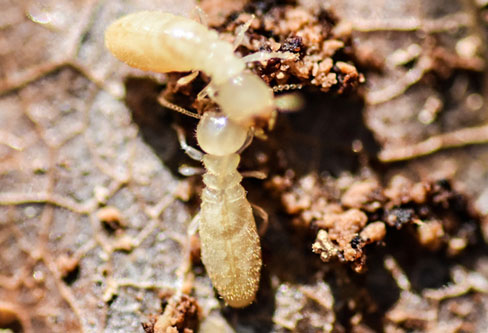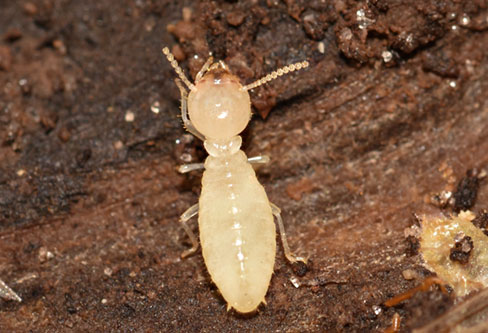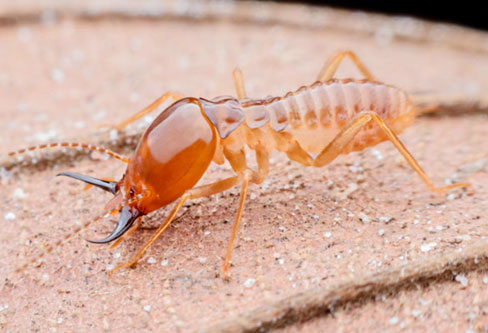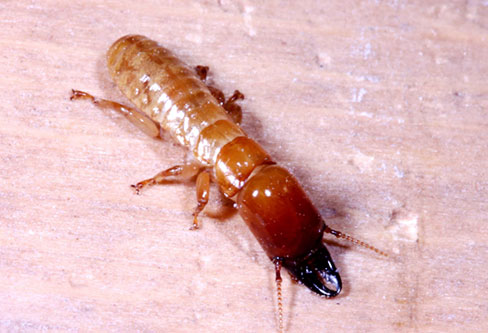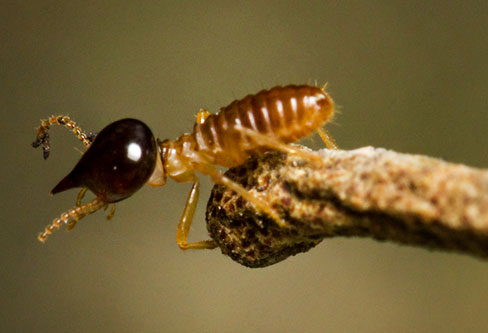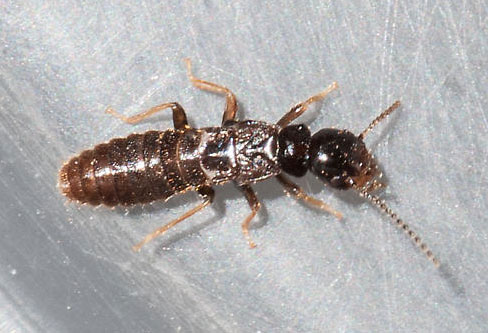Termites are known as different names like silent destroyers, white aunts, wood eater, etc. Every year termites damage approximately 5 billion dollars. A single termite does not dangerous. But a whole colony can damage lots of structure on the home in a very short period of time. So, as a consumer, you need to do termites pest control and focus on how to identify and control termites to protect your property to serious damage.
Termites Pest Control
Types Of Termites
Although there are about 2,000 known termite species in the world, the following present the biggest threat to homeowners in only in the U.S:-
Subterranean termites
Color:- Creamy white to dark brown/black
Legs:- 6
Shape:- Long, narrow and oval
Size:- ⅛ inch long
Antennae:- Yes
Region:- Found throughout the U.S. They grow in dark and damp area with no air passage, mostly in moist secluded areas above ground.
Habitat:- It lives in a colony with 2 million members.
Threats:- It differs from other termite species. They have hard Saw-toothed and they can finish the entire building.
Formosan termites
Color:- Creamy white to brown
Legs:- 6
Shape:- Long, narrow and oval
Size:- ½ inch in length
Antennae:- Yes
Region:- Hawaii, North Carolina, South Carolina, Georgia, Mississippi, Virginia, Texas, Louisiana, Alabama, Florida, Tennessee, and California
Habitat:- They live in colonies with 350,000 workers.
Threats:-Formosan termite colony has millions of termites and they can consume one foot of 2*4 wood in 25 days.
Dampwood termites
Color:- Creamy white to brownish
Legs:- 6
Shape:- Long, narrow and oval
Size:- ½” – ⅝ inch long
Antennae:- Yes
Region:- Found throughout the pacific coastal and adjacent states, the desert or semi-arid southwest, and southern Florida
Habitat:- Dampwood termites are found in logs, dead trees, stumps, and utility poles.
Threats:-Dampwood termites need to excessive moisture and they like infest structures.
Drywood termites
Color:- Creamy white to light brown
Legs:- 6
Shape:- Long, narrow and oval
Size:- ⅜ to 1 inch long
Antennae:- Yes
Region:- Primarily found coastally from South Carolina westward to Texas to west coast of California.
Habitat:- Drywood termites like dry wood & they transport one location to another via infested furniture, picture frame, etc.
Threats:- Drywood termites chew beams, walls, and floors, damage $5 billion property every year.
Conehead termites
Color:- Cream bodies; dark brown heads
Legs:- 6
Shape:- Long; narrow; Soldiers have a pear shaped head
Size:- 3 – 4 mm
Antennae:- Yes
Region:- Broward County, Fla.
Habitat:- They build dark brown mud and tube on the ground, it in fact trees and wooden structures.
Threats:- Conehead termites are aggressive termites species. They damage widespread property in a short period of time.
Rhinotermitidae
Color:- White
Legs:- 6
Shape:- Long, narrow
Size:- ½ inch long
Antennae:- Yes
Region:- Santa Rita Experimental Range, Pima County, Arizona, USA (Virginia, Texas)
Habitat:- Rhinotermitidae mostly found in forest and they like to eat outdoor woods.
Threats:- Rhinotermitidae are the very calm type of termites they walk slow but they can damage your articles.
Mastotermitidae
Color:- Dark brownish
Legs:- 6
Shape:- Long, narrow and oval
Size:- 3 – 5 mm
Antennae:- Yes
Region:- northern Australia
Habitat:- These termites are live in smalls colonies. They did not leave in the mud.
Threats:- They are a fast eater and they damage to wallpapers, books, photo frames, etc.
Kalotermitidae
Color:- Black color head and white creamy body
Legs:- 6
Shape:- Long, narrow and oval
Size:- 2 – 3 mm
Antennae:- Yes
Region:- South Carolina
Habitat:- Lives in wood with excavations without coming in contact with soil.
Threats:- They eat dry wood, and they can damage furniture utility towers, buildings, and stored wood.
Serritermitidae
Color:- Brownish head, creamy & black body
Legs:- 6
Shape:- Long, narrow and oval
Size:- ½ inch long
Antennae:- Yes
Region:- South America
Habitat:- They are found on the ground and under the ground. They have a big colony.
Threats:- They have sharp tooth and jaws, they can damage any types of wood quickly
Termites Control Treatment
Many types of insecticide treatments are available for controlling termites. Most are sold as aerosol sprays, liquid or while few are formulated as edible baits or dust. Pesticides treatment needs the removal of food and pots from treated regions. Always read and follow the instructions.

Chemical Treatments
Before selling or Distribute any pesticide Environment Protection Agency (EPA) reviews the pesticide to determine that it will not have any pose risk to human health and the environment. After determinate that they provide license and registration to use them as per the labeled direction. The pesticide or chemicals are used to prevent termite is know as termiticides. Termiticides can be only used by trained pest management professionals person. Some Approved chemical treatments are:-
- Termite baits.
- Wood treatments.
- Liquid pesticide soil-applied termiticide.
- Building materials filled with termiticides.

Non-Chemical Treatments
In Non-Chemical termite removal services, non-chemical products are used. Because somehow the chemical products have some negative effects on the environment and human health. Some of the best ways to keep termites out without using insecticides. For example:
- Boric acid are directly apply on the wood and around the building foundation. This heal into the wood and provide the long lasting protection to the termites.
- Diatomaceous Earth can be use at the place of Boric acid as same fashion. That can protect your wood for a long period of time.
- Orange Guard is a OMRI Certified Organic Insecticide. It’s made of citrus peel extract, so it is safe for indoor.
- Botanical Insecticides is less toxic because it is made from plants which have insecticidal properties.
Because in these methods insecticide is not used, therefore Environment Protection Agency (EPA) does not regulate these methods.
Termites Control Services
Our services for Termites according to operating area are defined in two categories one is indoor and outdoor Termites control services.
The indoor area more closets so the method we use for termite removal will be different. In indoor pest control processes, the area we include is-
- Bedroom
- Kitchen
- Washroom
- Office place
The product we are using in Indoor Termites removal is-
Surface sprays- This spray is applied around the Termites harbourages and on the route usually Termites travel. Like wooden products chain, table, etc.
Baits- Baits products are used to trap and figure out where is the Termites coming from.
The active ingredients used in termite baits are:
- Nobiflumuron
- Diflubenzuron
- Hydramethylnon
- Hexaflumuron
- Lufenuron
Insecticides Powders- Where we can’t use spray and other insecticide products then powders are used. A thin layer of powder is dusted on the targeted area of Termites and allows it to stay for more than 24hours.
Bug Bombs- This method is a single hit method. The product is used to release the pest chemical at once. The method is perfect for the home area where the excessive encounter of Termites is seen.
As outdoor area doesn’t allow closet so we have to use products that are strong and effective for a long duration. So, here the pest product is used in a larger quantity than we take in indoor or in house pest control. The area we include in outdoor pest control are-
- Hall
- Balcony
- Terrace
- Garden
- Windows & Exhaust fans cleaned
The product we used in outside pest removal is-
For Outdoor pest control prefer products are gels and powders. Because it stays for long and affects the most.
Gel Termites killer- A boundary of Termites killer is created around the area that Termites surrounds. This gel is effective for more than 6 months and may run longer if it is not washed off.
Termites killer powders- The commonly used Termites treating powder is Boron sodium oxide. Powdered Boron sodium oxide is spread in outdoor areas.
Termite sprays can be used in the outdoors as an instant effect. It may or may not be applicable for a long duration.
Why We Need Termites Pest Control Services
Termites destroyed billions of dollars products every year in the U.S. They primarily feed is wood, but they also damage wallpaper, books, curtains, and even swimming pool liners and our home filtration systems.
To Prevent this big loss, we need Termites Pest control services.

